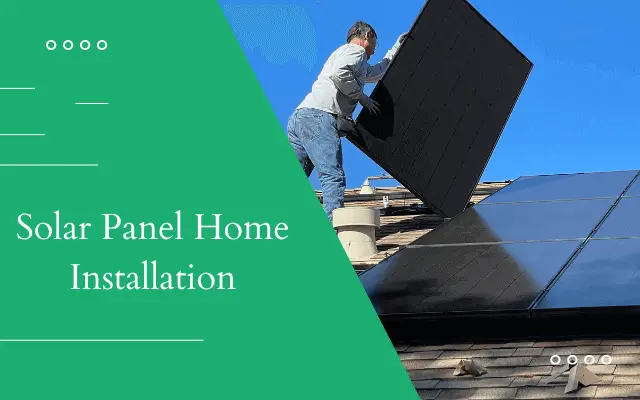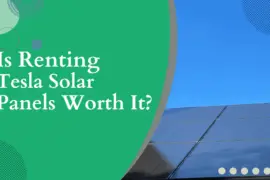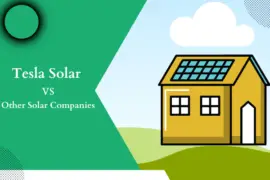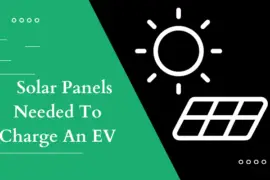Last Updated on May 30, 2023 by Rose Morah
Installing solar panels at home is a great investment. However, many things could go wrong in the future if done wrong.
To help you make better decisions, this article covers in detail the factors to consider before installing a home solar power system.
Before installing home solar panels, the following are the factors that you will need to consider:
1. Is Your Roof Suitable for Solar Home Installation?
When installing solar panels on your roof, you will need to find out:
- The size of your roof
For instance, if you have a small roof, it might not be worth installing solar panels on the roof.
- The amount of open space you have on your roof
When it comes to the roof space, the roof may be good in size to fit your solar panels however, if there are many things popping out through your roof, this could minimize the space you have on the roof for the solar panels.
Additionally, if the roof is surrounded by trees, or if there are close buildings providing shade to your roof.
It is important to find out if there are large obstructions providing shade to your roof before installing solar panels.
The shade will be limiting the amount of solar production.
The roof should be openly exposed to direct sun, without being blocked by shades from other buildings or trees.
Related:
How many Solar Panels You Need To Power Your House (Complete Guide).
How To Calculate The Solar Panels Needed To Charge An EV.
Alternative options if your roof has shading:
- Install ground-mounted solar.

If the solar panels cannot be installed on the roof because of the reasons presented above, the other available option is installing ground-mounted solar.
This is a great option if you have a large property with open space and no shading.
- Use power optimizers.
The other option would be to add the power optimizers under each solar panel so that the shading on one panel will not affect the other panels.
- What orientation is your roof facing?
When the panels are installed facing the wrong direction this will minimize the amount of power generated.
So, how do you check what orientation your roof is?
Normally solar panels should be facing South or slightly South East or West.
This is because the sun stays up the longest in the south, thus giving you more solar energy during the day.
To check what side of your roof faces:
- Head on to Google Earth.
- Find your house.
- Then take a look at the compass to see the direction.
| PRO-TIPs – If you live in the northern hemisphere, some of your solar panels will need to be facing the South. – Time-of-use billing also plays a part in determining which side of the roof you should install the solar panels on. Time-of-use means that you are paying for electricity at a certain time of the day. If you have a time-of-use billing, you then may need to consider installing some of your panels on the west side of the roof to produce more energy when the sun is setting at around 4 PM. These panels will make more electricity during the most expensive time of the day. |
See also:
Tesla Solar VS Other Solar Companies: Is Tesla Solar Worth It?
Is Renting Tesla Solar Panels Worth It?
- What type of roof do you have?
The roof type can significantly affect the cost of solar installation.
There are many different types of roofs.
The table below shows examples of different roof types:
| Type of Roof | Effect On Cost of Solar Installation | Reason |
| Clay Tiles | Cheaper to install | It is quite easy to install solar panels on these types of roofs because they are easy to lift and adapt. |
| Slate Roof | Expensive to install | It is not easy to install on this roof because it involves a lot more labor and is more technical. This would also affect the installation cost because it will take longer to install. |
| Flat Roof | It depends. | If you are going to be using tilt-up mounting equipment that will raise the panels to about 25°, then it can be a little expensive to install. |
| Steeper Pitch Roof | It depends. | Some installers charge more to install solar on a steeper pitch roof mainly because it is risky and can also be very difficult to install solar panels. |
- Does your roof need repairs before installation?
This is not only a smart move but may also save you a lot of money in the future.
For instance, imagine a situation where after installing solar panels on your roof then have to replace the whole roof 2 years down the line.
If you have an old roof, will you may need to replace it. You may need also to install an in-roof system instead of an on-roof system.
| Remember to ask a roofing expert or your solar installer – The age of your roof – If the roof is due for replacement This is because even if it is old, it may get damaged and will be costly to install in the future. |
- How much weight can your roof take?
With many modern roof styles available, adding solar panels today is easy and the weight will mostly not affect the stability of the roof.
However, if you are living on an old property that has old roofs, you may need to be extra careful when installing solar panels.
This is because solar panels could add a significant amount of weight to the roof.
| You get over 5% of the solar energy boost when you clean the dust off the solar panels. However, this is not a must if you have a very high roof. |
2. What size array do you want?
To help you determine what size array you would want to be installed, you will need to answer the following questions:
- What’s your main reason for installing solar?
For example, is it a form of investment? Meaning you want to sell the excess electricity generated from the solar panels.
- What do you want to achieve after installing solar in your home?
- What kind of solar PVC do you need?
- What’s your budget? Do you have a payback period?
- How much electricity do you consume annually on your property?
You can put your month-to-month electricity records in an excel sheet to find the average.
This way your solar installer will be able to advise you on what solar panel size will be most suitable for you.
| NOTE: When deciding on the number of solar panels you need, instead of just focusing on the amount of energy you need now focus also on the energy you will need in the future. Therefore, if your roof has enough space, and you can afford to get more panels on your roof, you should buy now instead of later. Otherwise, in the future, you may spend more on installation costs. |
3. Can scaffolding be erected on my property?
Before installation, you will need to figure out how to get to the roof.
This is because, in some houses, there may lot of obstacles that could make it challenging to erect a scaffold.
Additionally, remember to include the scaffold installation budget when planning to install solar panels on your property.
4. Do you want solar home battery storage?
Solar battery storage is essential if you are looking to maximize solar energy efficiency.
This is because it stores the solar energy collected during the day when the sun is shining.
This means that, if you use your electricity more in the evening hours when there’s no sun, you can still be able to enjoy electricity from the solar battery.
However, here are a few factors you will need to consider if you want to use solar batteries:
- The space on your property where the solar battery can be installed
Most of these batteries can be quite large.
- Do you meet the electrical requirements?
Some of the electrical requirements include:
- The size of your main cut-out fuse.
For instance, if the main cut-out fuse size does not meet the size requirements, then you may need to upgrade it.
Additionally, if you have an EV charger installed on your property, then you may most probably also need an upgrade to minimize the load.
- The space on your consumer unit/fusebox
In order to install a solar panel PVC and a battery, you will need to have at least two spare ways on your consumer unit/fusebox.
However, if you do not have one, the installer will have to figure out a plan B.
For example, he can decide to install a switch fuse and another consumer unit that will run all the new circuits for the solar and battery.
| random tip: systems with higher voltage are more efficient. |
5. What’s your choice of inverter?
An inverter is the critical part of your solar system and not the solar panels.
It converts DC power from the solar panels to AC power, which is used in the house or on your electric vehicle.
So, if you decide to install an inverter, you will need to figure out:
- The type of inverter that you would like installed.
- Where the inverter will be mounted.
There are two types of inverters:
- String inverter.
This is one massive inverter that takes the input from all the panels and converts it from DC to AC.
However, string inverters are known to have some downsides. For example, if it goes out, the entire system goes out as well.
This may be very devastating because you will have to get it fixed to use solar energy in your house.
Additionally, most inverters are known to have problems, and to avoid them I recommend the other type of inverter.
- Microinverter
Microinverters are the other option.
These are microinverters placed under each installed solar panel.

Here are the differences between a string inverter VS. a microinverter
| INVERTER | MICROINVERTER | ||
| 1. | Price may vary depending on the installation process. Therefore, some can be expensive while others are cheaper. | 1. | They can be more expensive compared to the spring inverter, especially if you are going to be installing more solar panels. |
| 2. | It is easier to access after installing. | 2. | It can be hard to access, especially if the solar panel is installed on the roof. This is because, if something goes wrong you will have to go to the roof to check it out. |
| 2. | It has more problems after installation. It tends to fail sooner compared to microinverters because of having to deal with more power. | 2. | It rarely fails. Lasts longer compared to the spring inverter. It can last up to 25 years and more. |
| 3. | Its performance cannot be compared to microinverters. (less) | 3. | Performance is much better compared to the inverter because you get more power |
| 4. | If something goes wrong it affects the whole system. This means you’ll lose your entire array. | 4. | If something goes wrong, it’s mostly only one solar panel affected and not all. |
| 5. | Shading on one panel will affect the output energy. | 5. | Shading on one panel does not affect the other panels. This is because each solar panel is working on its own and not relying on each other. |
| 6. | You will need to have extra space for installation. | 6. | It is installed under the solar panels therefore, there’s no need to find installation space. |
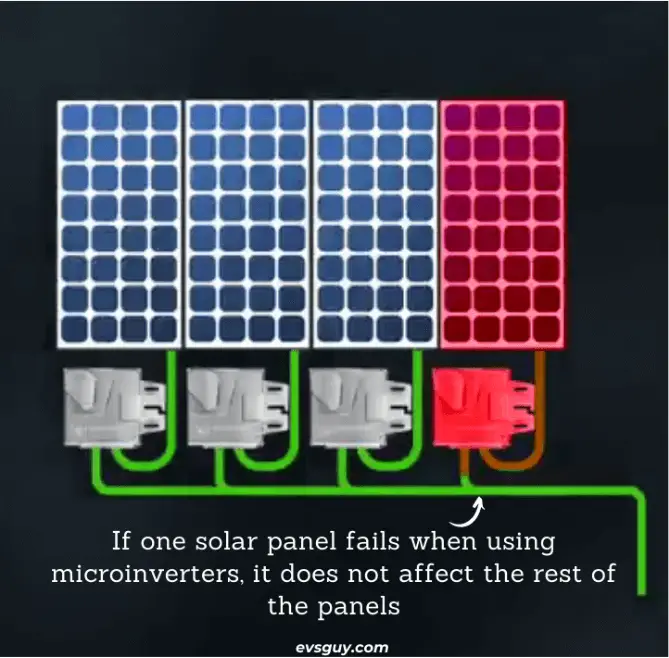
Solar panel home installation tips
- Get an expert to install the solar panels in your house
This is important because some contractors may end up doing more harm to your house while installing the solar system, which may end up costing you a lot of money in the future.
- Before buying a solar system, understand when your break-even point is going to be.
Calculate how long it is going to take you to pay off your panels and see if it makes sense.
You will need to take into account the price of the panels, inverters, price per watt, and labor costs to help you make a better decision.
You can use sites such as Drone Quote and Energy Sage to get almost accurate solar and roofing quotes.
And to help you get a clear comparison of the most expensive and cheapest solar systems, to come up with the best decision.
- Research and get the best tool for monitoring your solar energy production on a daily basis.
This will help you know the best days and months of solar energy production. You will also be able to reduce some variables.
The image below shows what I use to monitor my daily solar energy.
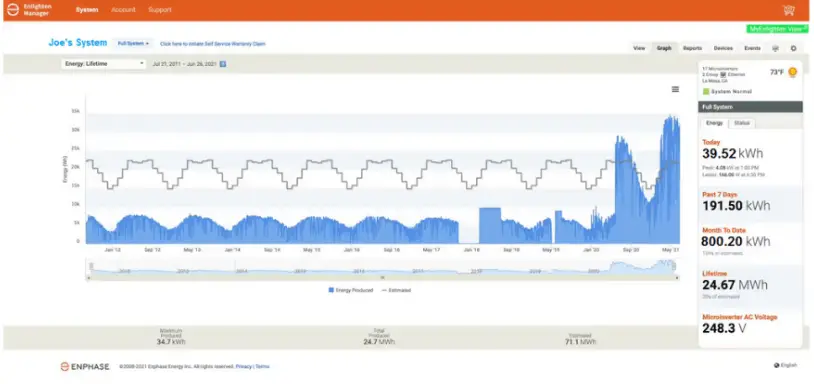
5. Buy the solar panels from a reputable company that looks like it is there to stay
They should have good management and be financially stable.
I would recommend you stay away from newer solar companies, especially those that offer cheaper prices.
Most of these companies end up falling into bankruptcy and you are left on your own because the warranties won’t matter.
In conclusion, if you are thinking about going solar, I would recommend you go sooner, even today, because it is a good investment.

